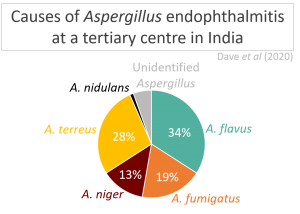Submitted by Aspergillus Administrator on 13 March 2013
 |
| Poor living conditions in New York |
There is a wealth of evidence that people living in damp homes are more prone to respiratory illness, asthma, sinusitis and where present they are likely to worsen (WHO guidelines for indoor air quality: dampness and mould WHO/Europe, 2009). There is less certainty over what is causing the health problems though dust, volatile organic compounds, increase in the numbers of micro-organisms present, pet dander, insects & rodents are all implicated to a greater or lesser extent.
It is clear then that people should not be forced to live in damp homes. The next difficulty we face however is that damp homes are plentiful, partly because older properties were not built for modern living or have been adapted to save expensive heat by cutting ventilation, and partly because of poor maintenance and the need for cheap housing in areas of economic deprivation.
Landlords can be unwilling to spend money on a property that raises little money and will often do the minimum required to keep letting it – this is in spite of government laws (UK and USA) that now place a duty of care on the landlord to ensure the good health of their occupants. Landlords often blame the way their occupants are failing to ventilate and are carrying out activities that will push a lot of moisture into the air of the house e.g. drying laundry inside the home, occupants are regularly ill-informed on how to ventilate effectively or are forced to minimise ventilation to keep heat within their home or for security purposes. Disreputable landlords may let properties they know to be damp and once occupants move out cover up the mould prior to letting the home to new, unsuspecting people – but how much of this goes one, what effect does it have on the health of the occupants?
This recent paper studies only a small sample of families living in damp homes in New York – 22 patients were enrolled suffering from poorly controlled asthma – all were adults aged over 18.
All of those patients were granted legal assistance to help improve their homes. 10 failed to take up the offer which left a group of 12 who used the legal system to force their landlords to carry out work. Work carried out included fixing leaks (mould growth was visible in 50% of the properties), painting, structural repairs, pest extermination and so on (see table 1 in the paper).
The results with regard to living conditions must have been marked but the results with regard to their asthma are remarkable.
Improved asthma control was also accompanied by decreased ED visits and hospital admissions by over 90%, implying significant health and financial benefits. The use of systemic steroids, associated with a myriad of adverse effects, was eliminated in 73% of the patients.
This is the first paper showing that improving living conditions has a direct impact on improving the health of adult occupants. Its small sample size weakens its acceptance as a result we can apply generally but the strength of the result tends to argue that there is something we can all take from this. Further work will follow.
News archives
-
Title
Date


